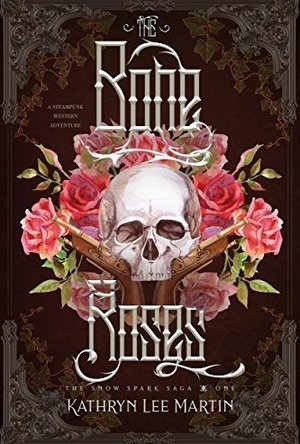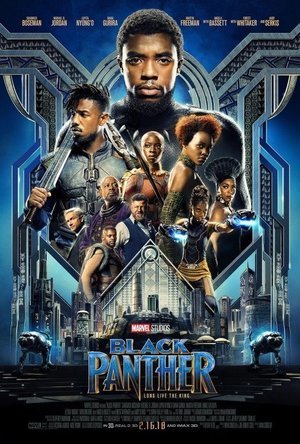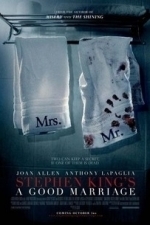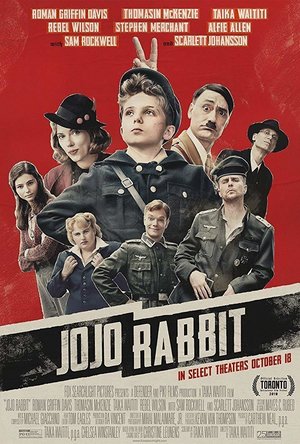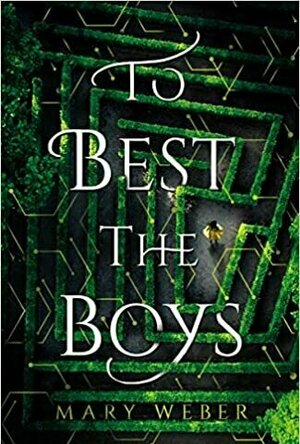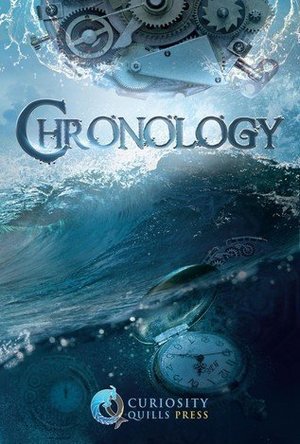
Curiosity Quills: Chronology
Richard Roberts, Tony Healey, Piers Anthony, J.R. Rain, Jordan Elizabeth Mierek, James Wymore, Stan Swanson, Darin Kennedy , Julie Frost , Andrew Buckley , J.P. Moynahan, B. C. Johnson, J. P. Sloan, Andrew J. Rausch, Katie Young , Scott Nicholson, Wilbert Stanton, Tara Tyler, Mark W. Woodring, J. E. Anckorn, Nathan L. Yocum, G. Miki Hayden, Matthew S. Cox and Matthew Graybosch
Book
It's time... for time! Embark on a literary journey through the ages with Curiosity Quills Press in...
Becs (244 KP) rated The Bone Roses in Books
Apr 5, 2019
I received a copy to read and review for my honest opinion from The Parliament Press.
TRIGGER WARNINGS: Violence, Gore, Oppression, Discrimination
I don't generally like Western stories but this is also considered Young Adult/ Fantasy so I figured I would give it a try, especially after reading the very intriguing synopsis. But be warned, this story is geared more towards a mature audience as there are a lot of scenes that are more NA then YA. This is book one(1) of the Snow Spark Saga.
Set in a post-apocalyptic West, thirty years into the future after Yellowstone erupts, the United States is reformed. A cruel king named Hyperion has taken control of the entire region and has cut multiple of small settlements off from the trade routes due to those settlements not bowing to him. All because they believe in God and Hyperion wants everyone to worship him. The main settlement that takes place within The Bone Roses is Rondo. In order to survive, the settlements have to have outlaws that are known as rustlers. These outlaws risk their own lives to steal from the capital city, Adonis. If caught, the punishment is torture and death. The main character, Rags, is a rustler with an extremely large bounty on her head.
But Rags runs into a problem when on a raid, the Kingdom Corps (K.C. for short) start chasing her. She manages to slip away with her adopted father Tracker and what neither of them realizes, is that they are being followed. This leads to a whole bunch of other problems down the road.
This fast-paced, page-turner will leave you on your toes until the very end.
Characters:
Rags - the protagonist of the story. Rondo's rustler, she is feared and the best at her role. But she does have a realistic sense to her that allows the reader to really get a feel on her.
Tracker - Rags' mentor and "adopted" father. Very mysterious and seems to have a hidden past.
Matthew - Rags' best friend, the preacher's son. I thought he was going to be a love interest, but he was only seen as a brother/friend to Rags.
Jericho - the preacher. He's seen as Rondo's town leader.
Sadie - a mother figure to Rags and soon-to-be-mother. No major role in the story but does seem to be hiding a past.
Frank - husband of Sadie and soon-to-be-father. No major role in the story.
Hyperion - the wicked king that thinks he's the almighty God.
Henny - Hyperion's second in command, he's to seek out all the rustlers and take care of them. One thing I really love about his character is that you hate but like him. Like he's the antagonist that does things that make you question why you ever put him into the antagonist category and then turns around and does the things that make him a bad guy. (if that makes any sense at all lol)
Hunter Lawrence - the sheriff of Rondo and discriminates against Rags because she isn't a true citizen of Rondo.
Colton - a luresman (someone who's good at negotiating with settlements), but he's an overall mysterious guy that leaves you wondering the same thing as Henny. Is he really bad? Is he really good? Can you trust him? Possible love interest to Rags??
Reasons why I rated it 5 stars:
1. Very intriguing from the beginning - the plot was amazing!
2. No grammatical or spelling errors - the writing was phenomenal!
3. There was not only character development but also story development! The only character that lacked any background was Rags, but she doesn't remember much of anything from before her arrival into Rondo.
4. With the development and plot, the overall story came together rather nicely and it left me wanting more.
5. This is a series that I can't wait to read more of!
"Deny all knowledge - but leave no one behind. Never"
BankofMarquis (1832 KP) rated Black Panther (2018) in Movies
Feb 19, 2018
The answer: Good Enough.
Diving deeper into the character/hero T'Challa/Black Panther (Chadwick Boseman) who was first introduced in CAPTAIN AMERICA: CIVIL WAR. In this film, we learn more about the backstory of this man/character as well as the world in which he lives and the burdens he bears. It also, interestingly enough, pretty much ignores the rest of the Marvel Cinematic Universe for much of it's 2 hour 14 minute timeline. It mostly concerns itself with interior issues in the hidden kingdom of Wakanda and I think this tactic is a welcome relief from the giant, CGI-laden, characters-heavy Marvel films of recent memory.
Director/Writer Ryan Coogler (CREED/FRUITVALE STATION) decides to focus the attention of this film inward, rather than outward and we are rewarded with a rich, Shakespearean family drama that works because of it's simplicity.
Much of the effectiveness is due to the charismatic cast that has been drawn to this picture because of the significance of it as well as the richness of the characters they inhabit. Bozeman is regal and strong in the title role - no hint of the suffering, "I don't want this" SuperHero angst so often seen in these types of film. Academy Award winner Lupito Nyong'o joins in just as strong and independently as Nakia a "Spy" and erstwhile romantic foil for T'Challa - though Coogler is wise to avoid the "will they/won't they" cliche as well as eliminates, entirely, the "damsel in distress" subplot that would have been so tempting.
Helping these two out are a veritable "who's who" of actors of color - Angela Bassett, Forrest Whitaker, current Best Actor nominee Daniel Kaluuya and Sterling K. Brown - all turn out for fun (albeit brief) turns where each one of them gets a chance to show what they can do. Special notice should be made to Danai Gurira (TV's kick-ass Michonne in THE WALKING DEAD) as Okoye - T'Challa's chief general and bodyguard who must choose duty over honor (or does she) and, especially, Letitia Wright as T'Challa's younger, wise-cracking sister - who also happens to be the "Q" of this film. She jumped off the screen and shone brightly (but not so bright as to wash things out) in every scene she was in.
And...of course...there is Coogler favorite Michael B. Jordan (he's been in all of Coogler's major motion picture) as the villain of the piece - Erik Killmonger (the name says it all). Jordan does a nice job of bringing 3 dimensions to a character that was written a little too 2 dimension-ally, if you ask me. This character could have just been an "angry young man" cliche, but with Jordan, he becomes something much, much more.
This being a Marvel SuperHero film, the Special Effects are terrific, showing a highly secretive, highly technolized Wakanda that is hidden beneath the surface.
Is it a perfect film? Well...no. This is, in essence, a "family drama" with some hi-tech action scenes and the obligatory "two armies fighting" finale, and while the acting is good enough to hold interest throughout, I would have liked to have seen a little more action thrown in.
But...ignoring the rest of the Marvel Cinematic Universe was a good move - as was casting such strong, believable and likeable film actors.
Letter Grade: A-
8 (out of 10) stars and you can take that to the Bank(ofMarquis)
Darren (1599 KP) rated Stephen King's A Good Marriage (2014) in Movies
Jun 20, 2019
Darcy’s life takes a sudden change when searching for batteries she finds a hidden box with the drivers licences of woman who are found dead. As Darcy struggles to deal with the realisation that she is married to a serial killer we watch how Bob is tracking down him latest victim while away on business. We have to watch how Bob and Darcy try to work through the problems because spilling the secret could ruin the family.
A Good Marriage really does end up coming off very dull, the concept sounds very interesting. I feel this story should have been a hell of a lot tenser because of the action of the husband especially with the idea that the wife doesn’t want to destroy her children’s lives with the secret. I can honestly say I was expecting a look into the husband’s killing and an actual confrontation rather than just a calm talking about his actions. Overall the story doesn’t come off very well at all and I can honestly say this will disappoint any and all the Stephen King Fans out there. (2/10)
Actor Review
Joan Allen: Darcy Anderson is the loving mother and wife who discovers her husband’s secret. Darcy has to try and figure out what to do because talking will destroy the family but she also knows the next victim will now be here fault. Joan does a solid job but doesn’t reach the levels you would expect to make you feel like her character is scared or keeping a brave face. (5/10)
Anthony LaPaglia: Bob Anderson is the account husband of Darcy who has been living a different life behind his family’s back as a serial killer. When his wife discovers his secret he has to convince her not to go to the cops and ruin the life the children think they have had. Anthony is an actor I would expect to be able to play this role really well but he doesn’t seem to get into the role enough to make us believe he is a killer. (3/10)
Support Cast: A Good Marriage has a supporting cast that are mostly people Darcy is trying to protect from the truth, but it also has a man trying to find out the truth about the killer.
Director Review: Peter Askin – Peter doesn’t give us enough tension in a film that should be filled to the rim with tension because of the subject matter. (3/10)
Thriller: A Good Marriage is a film that should be filled with tension but this manages to let it all go without capitalising on the idea. (2/10)
Settings: A Good Marriage keeps the settings great because the idea would be that the killer is in plain sight living a normal life. (9/10)
Suggestion: A Good Marriage has to go down as one to avoid because it really does disappoint trying to tell an easy story. (Avoid)
Best Part: Hard to find anything.
Worst Part: No Tension.
Improve Ideas: High tension level.
Believability: The idea does come from a real serial killer but the outcome on film doesn’t really work. (3/10)
Chances of Tears: No (0/10)
Chances of Sequel: No
Post Credits Scene: No
Oscar Chances: No
Runtime: 1 Hour 42 Minutes
Trivia: This is Stephen King’s first self-adapted screenplay since “Pet Sematary,” which was released 25 years earlier. The last feature film script he wrote was “Sleepwalkers,” released in 1992. Since then he has written TV movies, mini-series and shows, such as “The Stand,” “The Shining” and “Kingdom Hospital.”
Overall: Very disappointing thriller with no actual tension.
https://moviesreview101.com/2015/06/04/a-good-marriage-2014/
BankofMarquis (1832 KP) rated Jojo Rabbit (2019) in Movies
Jan 15, 2020
And, darn it all, if he doesn't pull it off.
As seen through the eyes of a zealous 10 year old Hitler Youth named JoJo, this film follows Jojo's journey from an idealistic follower of all things Nazi Germany to the harsher realities of the world - and what the 3rd Reich means to the world.
Young Roman Griffin Davis does a marvelous job as the titular character slowly changing his character from an all out innocent devotion to Hitler (his imaginary friend as played by Waititi) to a somewhat less innocent soul. His journey is at the heart of this film and he is a winning personality to follow along with. I was drawn into his struggles and was rooting for him to "come to his senses" throughout the course of this film.
Helping him in this journey is his Mother, played in an Oscar nominated turn by Scarlett Johannson. This character has an idealism all of her own and is willing to let her child "get there in his own time". It is a strong turn by Johannson...but Oscar nominated worthy? I'm not sure.
Also joining in for fun, frolic and (by turns) seriousness is the always great Sam Rockwell (Oscar winner for 3 BILLBOARDS...)as a disillusioned German Officer, comedian Stephen Merchant (LOGAN) in an unlikely mostly serious turn as a Nazi who likes to say "Heil Hitler" and Alfie Allen (GAME OF THRONES) as a devoted German soldier (at least devoted to Rockwell's character). Waititi also uses Rebel Wilson sparingly - as she should be used - as another devouted-to-the-cause German citizen.
Adding heft and pathos to this film is Thomasin MacKenzie (THE KING) in a role that would be a spoiler to say what she is playing, but...I WILL say that she needs to succeed in this role for the film to succeed (and she does).
Also, special notice needs to be made of the performance of cherubic Archie Yates (soon to be Kevin in the reboot of the HOME ALONE franchise) as JoJo's friend Yorki - who keeps getting knocked down and steps back up over and over again. I would LOVE to see the film that would have focused on this character (in addition to this film).
And, finally, there is the Writer/Director himself, Taika Waititi as JoJo's imaginary friend, Adolph Hitler. He is all fun loving and gay at the beginning becoming more and more frantic as the film progresses - mimicking the real life events that are happening around him.
Waititi's style in this film is reminiscent of Wes Anderson in such films as THE GRAND BUDAPEST HOTEL and MOONRISE KINGDOM and this works well here, giving this film more of a "fable" than a "realistic" look - and that is important to help set the tone for the events that follow. Waititi has a sure hand on the material (that he wrote) as the Director. He knows the tone he wants to strike and knows how to get there. He is nominated for Adapted Screenplay for his script (deservedly so) and was NOT nominated for Best Director - but his work in this area is just as good.
I did not know what to expect from this film when I walked into it, and I was more than pleasantly surprised. Give this little comedy/drama a try - I think you will be glad you did.
Letter Grade: A
9 stars (out of 10) and you can take that to the Bank(ofMarquis)

All Islamic Audio Stories Muslims Free
Book and Lifestyle
App
Get the largest collection of free All Islamic audio stories Muslims for your phone or tablet. Read...

Ultimate Lion Simulator
Games and Education
App
Jump into a brand new adventure as a ferocious Lion! Brave a dangerous new world to claim your place...
Ivana A. | Diary of Difference (1171 KP) rated To Best the Boys in Books
Oct 5, 2020
I will be honest with you and say that this book didn’t deliver. Maybe it was my expectations, after all, that got me too excited for my own good.
Let’s start with Rhen. She is a girl that loves science, and her father has taught her everything he knows. They are poor family and don’t have all the equipment in the world, but that doesn’t stop them to keep discovering and learning every day. In their kingdom, an unknown disease comes around, and Rhen’s mum is ill, with no cure yet. Rhen wants desperately to find a cure, and a rich boy wanting to marry her might promise her all the equipment she needs, but now it’s time that she lacks.
When the men’s annual tournament is about to begin, with boys fighting for the science scholarship, Rhen knows that she has no choice but to enter, disguised as a boy, and try to win this – for her, for her dad, and most importantly, for her mum.
The book flows really slowly. We get to about half of the book when Rhen decides to enter the tournament. I expected this to happen in the first couple of chapters, and to then have the adventure from within the labyrinth. For me, it was quite a slow beginning, but some of you might enjoy that. The writing is beautiful throughout.
>I loved the fighter within Rhen. She is a fierce person, determined to fight for what she wants. Even though throughout the book she has trouble with realising what is it that she really wants, we can see a bit of character development in her.
As a book that is supposed to cover gender equality, and women fighting for the same rights as men, this book didn’t really deliver. The letter states that every gentleperson – not gentleman. Which means, that inequality never truly exists at all. Women could have entered this competition, but they just chose not to.
The whole competition, the labyrinth and the scholarship lacks details and has enormous loopholes: one scholarship is given to one person – the one that wins the labyrinth. And after the winner is chosen, we have a scene where they all take a test, including the winner?
The disguise was a huge and important part of this book, as Rhen and her friend are pretending to be boys. Rhen cuts her hair, and her friend just pins it and ties it with a hat. They both wear boy clothes and barely remember to lower their voices. And that is all they do to not get recognised. And somehow, the people that know them their whole life fail to recognise them. A bit unbelievable…
I wish I loved this book, because I truly fell in love with the cover and the synopsis. But the whole labyrinth set-up seemed to be a side-story, with the illness being the main story, and the realisation of what Rhen actually wants to achieve. Random characters were introduced, that didn’t drive the story one bit, and the author also happened to throw in an inconsistent romance and a love triangle.
I hate to say this, but the book seems like an unfinished draft. It seemed so promising, and all I thought I would get out of this was non-existent.
I am not sure if I would want to recommend this book to you guys. If you want to give it a try, I encourage you, and would love to talk about it and hear what you think, but if you are here because you loved the synopsis, this book will probably not satisfy you

Talabat: Food Delivery
Food & Drink and Lifestyle
App
Hungry? The biggest Online Food Delivery App is Now in Your Pocket! Ordering food online made...

Ultimate Horse Simulator
Games and Education
App
Gallop into a brand new adventure as a beautiful wild Horse! Live wild and free in a gorgeous new...
